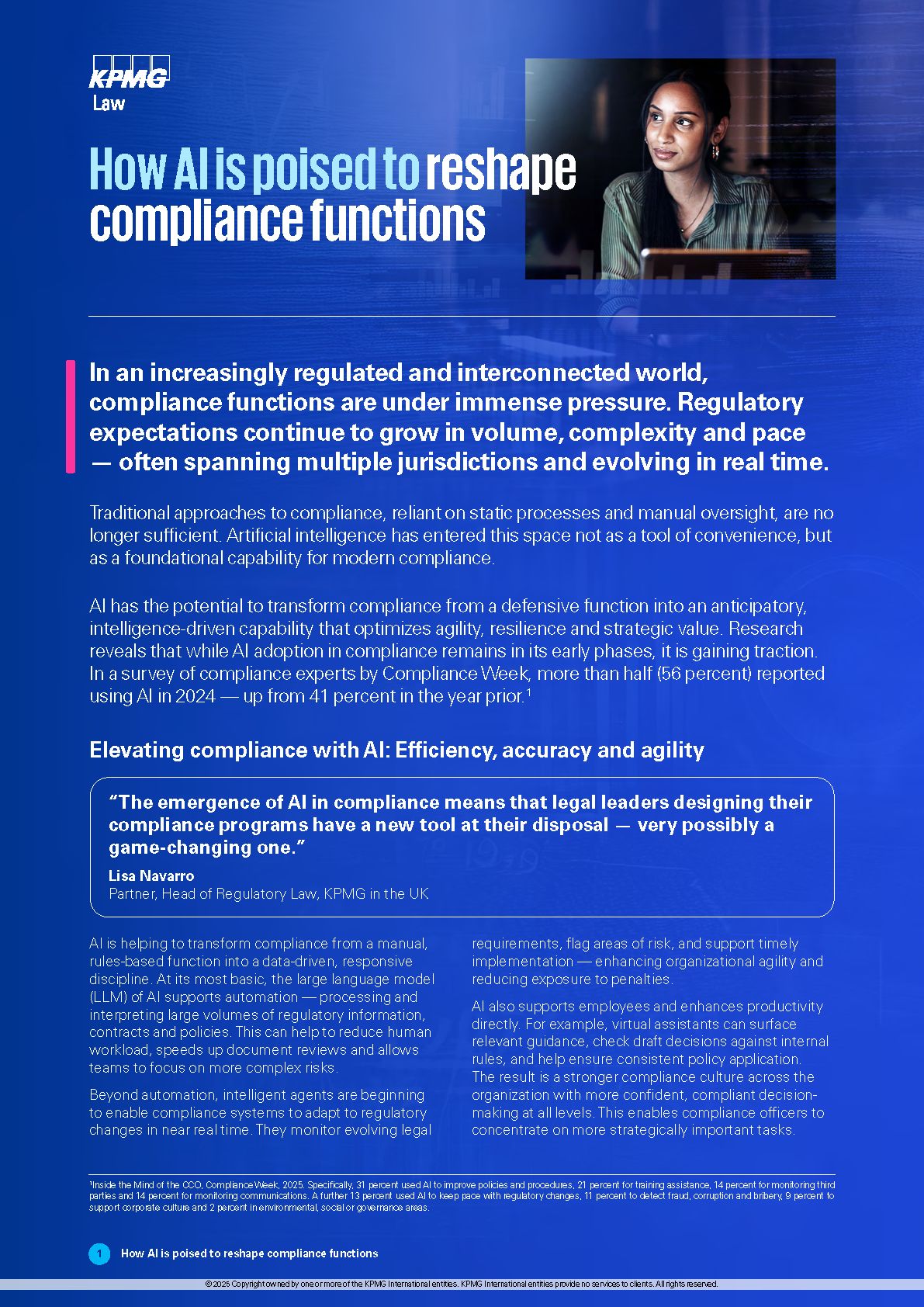AI adoption in compliance functions will mean different things for different enterprises.
At its most basic, AI can deliver efficiency gains, allowing teams to focus on more strategic risks. But beyond automation, AI is helping teams become smarter, with intelligent AI agents increasingly monitoring regulatory changes in real time. This increases organisational agility and reduces exposure to penalties.
Adoption often comes down to matching use case to business need. Current leading uses can include a wide range of examples from text generation and legal document review to contract alignment with regulation. AI can also assist with compliance monitoring and internal policy development, even case management following whistleblower reports.
This article explains how AI can add value for today’s compliance professionals and in what areas it can help the most. Along the way, it discusses some of the most common barriers to adoption — and how leaders can address those obstacles to help make their adoption a success.
The true power of AI in compliance is not in replacing the human expert, but in augmenting their judgment, allowing them to move beyond the manual to the nuanced and the strategic.

Four questions to help you get started
- How can you build a foundation of AI governance?
By establishing clear, adaptable organisation-wide principles for the responsible use of AI, you can help position the organisation for adoption success. - What are the high-value, low-risk use cases?
Focusing on easier, high-impact wins can help you demonstrate early success, build momentum, instill confidence and secure funding. - Are you upskilling the compliance function?
Training should be cross-functional and include training on AI fundamentals, risk evaluation techniques and ethical considerations. - What is the best way to integrate AI into existing workflows?
Rather than treating AI as an add-on, insert intelligence directly into day-to-day workflows to enhance decision-making.





